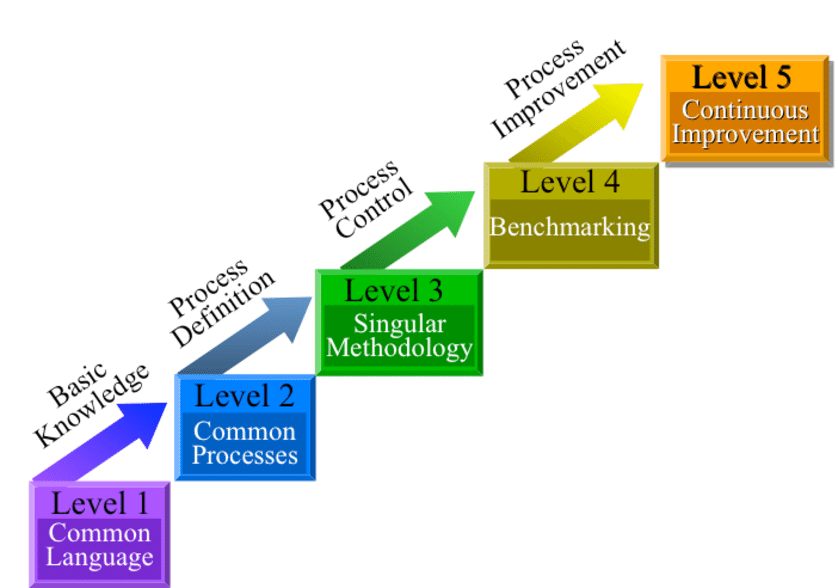Project risk is an uncertain event or condition that, if it occurs, has a positive or a negative effect on at least one project objective, such as time, cost, scope, or quality (i.e., where the project time objective is to deliver in accordance with the agreed-upon schedule; where the project cost objective is to deliver within the agreed-upon cost; etc). A risk may have one or more causes and, if it occurs, one or more impacts. For example, a cause may be requiring an environmental permit to do work, or having limited personnel assigned to design the project. The risk event is that the permitting agency may take longer than planned to issue a permit, or the design personnel available and assigned may not be adequate for the activity. If either of these uncertain events occurs, there may be an impact on the project cost, schedule, or performance. Risk conditions Continue reading
Project Management
Phases of Project Management Life Cycle
A project is a temporary endeavor undertaken to create a unique product or service. A project is temporary in that there is a defined start (the decision to proceed) and a defined end (the achievement of the goals and objectives). Ongoing business or maintenance operations are not projects. Energy conservation projects and process improvement efforts that result in better business processes or more efficient operations can be defined as projects. Projects usually include constraints and risks regarding cost, schedule or performance outcome. Project Management is the application of a collection of tools and techniques (such as the CPM and matrix organization) to direct the use of diverse resources toward the accomplishment of a unique, complex, one-time task within time, cost and quality constraints. Each task requires a particular mix of theses tools and techniques structured to fit the task environment and life cycle (from conception to completion) of the task. Continue reading
Project Management Basics
Project management is defined as process of initiating, planning, executing and delivery of a product with a group of a team to achieve a goal on time. In project management the main things to consider are start and end date of a project. For every project there will be a risk factor which should be taken care. Any project needs following four factors: Time, Budget, Quality and Feedback from the stakeholders. Also, project management is an important and significant contribution in delivering the business benefits through projects. It also has been seen that organizations these days are following a strategic way to achieve the goals of the project. Project management also plays a vital role in preparing a strategic plan to get the project from the customers and justify the requirements or funding but unlike any projects in a realistic way the goal of the project to achieve and be Continue reading
Build Operate Transfer (BOT) Model
Build Operate Transfer (BOT) is a project financing and operating approach that has found an application in recent years primarily in the area of infrastructure privatization in the developing countries. It enables direct private sector investment in large scale infrastructure projects. In BOT the private contractor constructs and operates the facility for a specified period. The public agency pays the contractor a fee, which may be a fixed sum, linked to output or, more likely, a combination of the two. The fee will cover the operators fixed and variable costs, including recovery of the capital invested by the contractor. In this case, ownership of the facility rests with the public agency. The theory of Build Operate Transfer (BOT) is as follows: BUILD – A private company (or consortium) agrees with a government to invest in a public infrastructure project. The company then secures their own financing to construct the project. Continue reading
Kerzner Project Management Maturity Model (KPM3)
Strategic project planning and other phenomenon for successful project has been recognized from several decades. Harold Kerzner has invented project management model innumerably knows as Kerzner Project Management Maturity Model (KPM3). This model is thoroughly possessed acquisition to best strategic management plans for any organization. Additionally this model is excellent medium to gain such excellency in project management system of any organization. Kerzner notifies that this model is considerably fruitful for strategic and multilevel planning for any organization. Foundation of achieving superiority level in various strategic goals can be illustrated by Kerzner Project Management Maturity Model (KPM3). This model consist five basic levels to enable better understanding of its functionality and proficiency for project management. This levels are commonly known as level of common language, common process, singular methodology, benchmarking, and continuous improvement. Level 1: Common Language This phase of model consists various understandings of terminologies relating to project management Continue reading
Introduction to Project Finance
Project finance is typically defined as limited or non-recourse financing of a new project through separate incorporation of vehicle or Project Company. Project financing involves non-recourse financing of the development and construction of a particular project in which the lender looks principally to the revenues expected to be generated by the project for the repayment of its loan and to the assets of the project as collateral for its loan rather than to the general credit of the project sponsor. Project Financing includes understanding the rationale for project financing, how to prepare the financial plan, assess the project risks, design the financing mix, and raise the funds. In addition, one must understand the cogent (intellectual, powerful) analyses of why some project financing plans have succeeded while others have failed. A knowledge-base is required regarding the design of contractual arrangements to support project financing; issues for the host government legislative provisions, Continue reading


